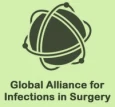Acute pancreatitis is a common gastrointestinal emergency. It can range from a mild, self-limiting disease requiring no more than supportive measures to severe disease with life-threatening complications. The most common causes of acute pancreatitis are gallstones and binge alcohol consumption.
In recent years there has been an increase in the incidence of acute pancreatitis reported worldwide. Despite improvements in access to care, imaging and interventional techniques, acute pancreatitis continues to be associated with significant morbidity and mortality.
Infectious complications, are common causes of morbidity and mortality in patients with acute pancreatitis. Infectious complications, both pancreatic (infected necrosis) and extrapancreatic (pneumonia, cholangitis, bacteremia, urinary tract infections, and so on), are a major cause of morbidity and mortality in patients with acute pancreatitis.
The paradigm shift and controversy over using antibiotics in acute pancreatitis has focused on pancreatic necrosis, because when compared with patients with sterile necrosis, patients with infected pancreatic necrosis (IPN) have a higher mortality rate. For this reason, preventing infection of pancreatic necrosis may be important.
The use and efficacy of prophylactic antibiotic therapy in acute pancreatitis has long been a point of controversy. Prophylaxis refers to the administration of antibiotics in patients when no clinical infection is present with the intent to prevent pancreatic infection. Although early unblinded trials suggested that administration of antibiotics may prevent infectious complications in patients with sterile necrosis, subsequent, better-designed trials have consistently failed to confirm an advantage. Recent evidences have shown that prophylactic antibiotics in patients with acute pancreatitis are not associated with a significant decrease in mortality or morbidity. Thus, routine prophylactic antibiotics for all patients with acute pancreatitis is no longer recommended.
Conversely antibiotics are always recommended to treat infected pancreatic IPN. However diagnosis of IPN is challenging due to the clinical picture that cannot be distinguished from other infectious complications and the inflammatory status caused by acute pancreatitis. The timing of infection in pancreatic necrosis is variable and unpredictable and peaks in the second to fourth week after the onset of pancreatitis. Clinical signs may be very sensitive yet are not specific enough. Limited evidences evaluated C-reactive protein (CRP) and PCT; diagnostic performance was found to be comparable. The diagnostic tool of choice remains CT-guided fine-needle aspiration (FNA) of the pancreatic necrotic areas. A CT-guided fine needle aspiration (FNA) for Gram stain and culture can guide clinicians in choosing an appropriate individualized antibiotic regimen. The presence of gas in the retroperitoneal area is considered indicative of IPN in the context of severe acute pancreatitis, but it is only present in a limited number of patients.
Pathogenesis of secondary bacterial pancreatic infection is still debated. Pathogens can reach the pancreas through the haematogenous pathway, via the biliary system, ascending from the duodenum via the main pancreatic duct, or through transmural colonic migration via translocation of the colonic bacteria. Most pathogens in pancreatic infection are gastrointestinal Gram-negative bacteria (Escherichia coli, Pseudomonas, Proteus, Klebsiella), which occur via disruption of the intestinal flora and damage to the bowel mucosa. Impaired body defences predispose to translocation of the gastrointestinal organisms and toxins with subsequent secondary pancreatic infection. But Gram-positive bacteria (Staphylococcus aureus, Streptococcus faecalis, Enterococcus), anaerobes and, occasionally, fungi have also been found.
Although diagnosis of infection in acute pancreatitis patients may be difficult based on clinical parameters, infected necrosis should be considered in patients with pancreatic necrosis who deteriorate or fail to improve after 7–10 days of hospitalization. Empiric antibiotic regimen should be always given in these patients. After empirical antibiotic therapy, a targeted antibiotic treatment can be based on the results of the cultures from the necrosis.
Appropriate spectrum and adequate levels at the site of infection are the main aspects that should be considered when selecting an appropriate antibiotic agent. Two factors should drive the clinicians in choosing the antibiotics: the flora and the penetration of the antibiotic agent in the necrotic pancreatic tissue. The spectrum of empirical antibiotic regimen should include both aerobic and anaerobic Gram-negative and Gram-positive microorganisms. Pancreatic penetration is good for Fluoroquinolones, Carbapenems, Ceftazidime, Cefepime, Metronidazole, Piperacillin-tazobactam. When there is no or minimal residual infection left after a source control procedure, a duration to 7-10 days may be sufficient, basing on the patient’s condition improves. Also, Candida infections may be often present in these patients, and antifungal therapy should be based on the previous exposure to antifungal agents, colonization status of the patient, and severity of illness. Fluconazole remains the most widely used agent for antifungal treatment. When the patient has already been exposed to fluconazole or is colonized with non-Candida albicans or when the patient is hemodynamically unstable, therapy with echinocandins is suggested.
Evidence is accumulating to suggest that prophylactic antibiotics in patients with acute pancreatitis is not associated with a significant decrease in secondary pancreatic infection and mortality. Treatment on demand seems to be the better option, avoiding excessive treatment and selection of bacterial.
References
Dellinger EP, Tellado JM, Soto NE et al. Early antibiotic treatment for severe acute necrotizing pancreatitis: a randomized, double blind, placebo controlled study. Ann Surg 2007;245:674–683.
Isenmann R, Runzi M, Kron M et al. Prophylactic antibiotic treatment in patients with predicted severe acute pancreatitis: a placebo-controlled, double-blind trial. Gastroenterology 2004;126:997–1004.
De Vries A, Besselink MG, Buskens E et al. Randomized controlled trials of antibiotic prophylaxis in severe acute pancreatitis: relationship between methodologic quality and outcome. Pancreatology 2007;7:531–538.
Jafri NS, Mahid SS, Idstein SR et al. Antibiotic prophylaxis is not protective in severe acute pancreatitis: a systemic review and meta-analysis. Am J Surg 2009;197:806–813.
Tenner S, Baillie J, DeWitt J, Vege SS; American College of Gastroenterology. American College of Gastroenterology guideline: management of acute pancreatitis. Am J Gastroenterol. 2013 Sep;108(9):1400-15.
De Waele JJ. Rational use of antimicrobials in patients with severe acute pancreatitis. Semin Respir Crit Care Med. 2011 Apr;32(2):174-80.
Stigliano S, Sternby H, de Madaria E, Capurso G, Petrov MS. Early management of acute pancreatitis: A review of the best evidence. Dig Liver Dis. 2017 Jun;49(6):585-594.
